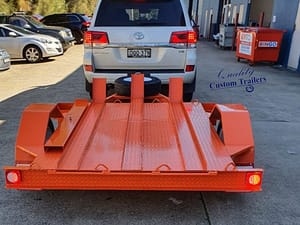Mobile SEO is all about making sure your website works well on mobile devices like smartphones and tablets. This means your site should be easy to use, load quickly, and look good on any screen size. As more people use their phones to browse the internet, mobile SEO has become a key part of digital marketing.
Why Mobile SEO is Important
In today’s digital world, having a mobile-friendly website is more essential than ever. Let’s explore why this is so important:
User Behaviour: More and more people are using their smartphones to browse websites. This shift means that if your site isn’t mobile-friendly, visitors may quickly leave, leading to lost opportunities. A seamless mobile experience is crucial to keeping users engaged and satisfied.
Search Rankings: Additionally, search engines like Google prioritise mobile-friendly websites in their rankings. If your site isn’t optimised for mobile devices, it could negatively impact your visibility, making it harder for potential customers to find you.
Stay Ahead of the Competition: Furthermore, businesses that invest in mobile SEO are more likely to attract and retain customers compared to those that overlook it. A well-optimised mobile experience not only enhances user satisfaction but also gives you a competitive edge in a crowded market.
By focusing on mobile optimisation, you can meet user expectations, improve your search rankings, and stand out from the competition.
Why Mobile SEO Matters
More People Are Using Their Phones
People are using their phones more than ever for browsing, shopping, and searching for information. This trend means that if your website isn’t optimised for mobile, you might lose a large part of your audience.
- Rising mobile usage: More people are on their phones than ever before.
- Meeting user expectations: Mobile users expect fast, easy-to-use websites. If your site is slow or hard to navigate, they’ll likely leave.
Google’s Mobile-First Indexing
Google now mainly uses the mobile version of websites for indexing and ranking. This means your site’s mobile version is what Google looks at first when determining where your website should rank.
- How it works: Google’s algorithm now favours mobile-friendly sites when ranking pages.
- Impact on rankings: If your site isn’t mobile-optimised, it may drop in search rankings.
How Mobile SEO Benefits Your Business
Mobile SEO offers multiple ways to help your business thrive. Let’s break down the key benefits:
Better User Experience: To start, a mobile-friendly website provides a smoother and more enjoyable experience for visitors. When users find it easy to navigate your site on their phones, they’re more likely to stay longer and engage with your content. This keeps potential customers interested and reduces bounce rates.
Higher Search Rankings: Moreover, optimising your site for mobile devices can improve its position in search engine results. With search engines like Google prioritising mobile-friendly sites, this optimisation makes it easier for potential customers to find you online.
Increased Sales: Additionally, with the rise of mobile shopping, having a seamless mobile experience can significantly boost your conversions. When users can browse and purchase effortlessly on their phones, they’re more likely to complete transactions, leading to increased sales for your business.
By focusing on mobile SEO, you’re not only catering to the growing number of mobile users but also ensuring your website stays competitive, visible, and easy to access in today’s fast-paced digital landscape.
Key Elements of Mobile-Friendly Design
Responsive Web Design
Responsive web design is all about ensuring a website seamlessly adapts to various screen sizes and orientations. This approach guarantees a consistent and enjoyable user experience, no matter the device being used. Let’s explore the key elements that make it effective:
Fluid Grid Layouts: First, responsive design uses flexible grids that scale proportionally to the screen size. This ensures that the website’s structure adjusts smoothly, maintaining balance and usability across devices.
Flexible Images and Media: Next, images and media elements are optimised to fit screens of all sizes without compromising quality. This adaptability prevents distortion and ensures that visual content looks great, whether on a smartphone or a large desktop monitor.
CSS Media Queries: Finally, CSS media queries allow designers to apply specific styles for different devices. By tailoring the design to match screen resolutions and orientations, this technique enhances the website’s responsiveness and functionality.
With these elements working together, responsive web design creates a cohesive and user-friendly experience across all platforms.
Page Speed Optimization
Page speed is a critical factor in mobile SEO, as slow-loading pages can frustrate users and lead to higher bounce rates.
- Minimizing HTTP Requests: Reducing the number of elements on a page to decrease load times.
- Optimizing Images: Compressing and resizing images to ensure they load quickly on mobile devices.
- Using Browser Caching: Storing parts of your website in users’ browsers to speed up load times on subsequent visits.
Mobile-Friendly Navigation
Navigation should be intuitive and easy to use on smaller screens to enhance the mobile user experience.
- Simplified Menus: Using expandable menus (like hamburger menus) to save space and make navigation more straightforward.
- Touch-Friendly Elements: Ensuring buttons and links are large enough to be easily tapped with a finger.
- Consistent Navigation: Keeping navigation consistent across all pages to help users find their way around your site.
Tools to Test Mobile-Friendliness
Google Mobile-Friendly Test
Google’s Mobile-Friendly Test is a simple tool that evaluates how easily a visitor can use your page on a mobile device. It provides a quick snapshot of mobile usability issues.
- How to Use the Tool: Instructions on entering a URL and interpreting the results.
- Common Issues Identified: Examples of typical issues and suggestions for resolving them.
PageSpeed Insights
Google’s PageSpeed Insights analyzes the content of a web page and provides suggestions to make it faster. It includes separate reports for both mobile and desktop versions.
- Running a PageSpeed Test: Steps to test a page’s speed and interpret the results.
- Improving Page Speed: Tips and recommendations for addressing speed issues identified by the tool.
Best Practices for Mobile SEO
Implementing AMP (Accelerated Mobile Pages)
Accelerated Mobile Pages (AMP) is an open-source framework that helps create fast-loading mobile web pages. Implementing AMP can significantly enhance mobile SEO by improving page speed and user experience.
- Benefits of AMP: Faster load times, improved user experience, and potential ranking boosts in mobile search results.
- How to Implement AMP: Use AMP HTML, AMP JavaScript, and AMP Cache to create streamlined versions of your web pages. Google’s AMP Project provides detailed guidelines and resources.
Optimizing Images for Mobile
Images play a crucial role in mobile user experience. Optimizing images ensures they load quickly without compromising quality.
- Image Compression: Use tools like TinyPNG or ImageOptim to reduce file size without losing quality.
- Responsive Images: Use the
srcsetattribute to serve different image sizes based on the user’s device. - Lazy Loading: Implement lazy loading to defer the loading of off-screen images until the user scrolls to them, improving initial page load speed.
Using Mobile-Friendly Pop-Ups and Interstitials
Pop-ups and interstitials can be intrusive on mobile devices if not implemented correctly. Google penalizes websites that use intrusive interstitials, so it’s essential to make them user-friendly.
- Avoid Intrusive Interstitials: Ensure that pop-ups don’t cover the main content of the page and are easy to dismiss.
- Use Banners and Slide-Ins: Instead of full-screen pop-ups, use less intrusive options like banners or slide-ins at the top or bottom of the screen.
- Delay Timing: Set a delay before the pop-up appears to allow users to engage with the content first.
Mobile SEO for Local Businesses in Sydney
Importance of Local SEO in Sydney
Local SEO is vital for businesses that serve specific geographic areas. For businesses in Sydney, optimizing for local search can attract more nearby customers.
- Why Local SEO Matters: Local SEO helps businesses appear in local search results, increasing visibility to potential customers in the area.
- Google’s Local Search Algorithm: Understand how Google’s local search algorithm works to improve your local rankings.
Optimizing for Local Search and Mobile Users
Mobile users often search for local information, making it essential to optimize your website for local search.
- Local Keywords: Incorporate local keywords into your content, meta descriptions, and titles (e.g., “SEO in Sydney”).
- Location Pages: Create dedicated location pages with accurate business information, maps, and contact details.
- Mobile-Friendly Content: Ensure that your content is easy to read and navigate on mobile devices.
Leveraging Google My Business for Mobile Search
Google My Business (GMB) is a powerful tool for improving local SEO and appearing in mobile search results.
- Complete Your GMB Profile: Ensure your GMB profile is complete with accurate business information, operating hours, and photos.
- Encourage Reviews: Positive reviews can enhance your visibility and credibility in local search results.
- Use GMB Posts: Regularly update your GMB profile with posts about promotions, events, and news to engage with local customers.
Monitoring and Improving Mobile SEO Performance
Key Metrics to Track for Mobile SEO
Tracking the right metrics helps you measure the effectiveness of your mobile SEO efforts and identify areas for improvement.
- Mobile Traffic: Monitor the amount of traffic coming from mobile devices.
- Bounce Rate: Track bounce rates to understand how well mobile users are engaging with your site.
- Mobile Conversion Rates: Measure conversions specifically from mobile traffic to assess performance.
Regular Mobile SEO Audits
Conducting regular mobile SEO audits helps ensure your website remains optimized for mobile users.
- Technical Audits: Check for issues like slow load times, broken links, and mobile usability problems.
- Content Audits: Review content to ensure it’s relevant, engaging, and optimized for mobile search.
- User Experience Audits: Evaluate the overall user experience on mobile devices and identify areas for improvement.
Continuous Improvement Strategies
SEO is not a one-time task; it’s an ongoing process that requires constant attention and improvement. To stay ahead of the competition, it’s essential to regularly refine your mobile SEO strategies. Here’s how:
Stay Updated: First, make it a priority to stay informed about the latest trends and algorithm updates in mobile SEO. Search engines frequently evolve, and keeping up ensures your strategies remain effective and aligned with current best practices.
Experiment and Test: Additionally, don’t hesitate to try out new strategies and assess their impact on your mobile SEO performance. Regular testing allows you to identify what works best and make data-driven adjustments to improve results.
User Feedback: Finally, gather and analyse feedback from your users to understand their experience. Identifying any pain points through their insights can help you refine your mobile design and functionality, ultimately enhancing the user experience.
By combining these efforts, you can ensure your mobile SEO strategy remains competitive, adaptive, and user-focused.








